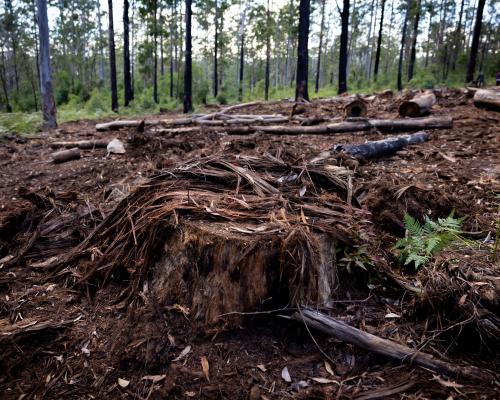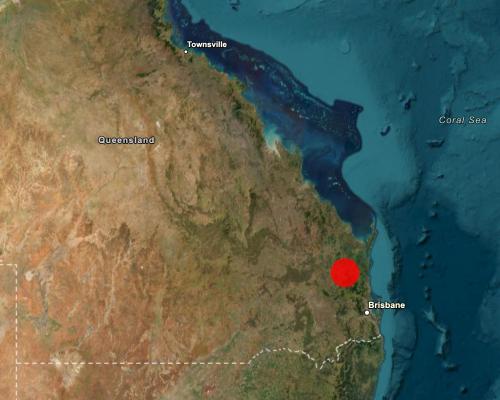
Forest and woodland across an area more than 1,000 times the size of the Sydney CBD was bulldozed in Queensland in 2022-23, newly published figures show, sparking warnings the state is escalating risks to endangered species and worsening climate change.
Almost half (44%) of the 332,015 hectares of clearing was in Great Barrier Reef catchment areas, causing nutrient and sediment flow that puts additional pressure on corals already bleaching due to climate change.
The state government land-clearing data for 2022-23, published this week, shows overall clearing was up 3% on the previous year.
Of the clearing, 21% (70,799 hectares) was remnant woodland, meaning it had not been cleared before or that it resembled uncleared forest, an increase of 8%. Remnant vegetation is important for biodiversity and supports endangered species such as the koala and greater glider.
Dave Copeman, the director of the Queensland Conservation Council, the state’s peak conservation body, said the figures were “shocking”.
“Queenslanders and international visitors alike would be distressed to learn that the Queensland government is allowing forests and woodlands to be bulldozed in the Great Barrier Reef catchment at an alarming rate, with over 140,000 hectares being cleared per year,” he said.
“This is devastating additional pressure on an already damaged Great Barrier Reef struggling to survive from repeated mass bleaching events. This clearing must stop.”
• Sign up to get climate and environment editor Adam Morton’s Clear Air column as a free newsletter
The Australian Conservation Foundation’s Nathaniel Pelle said the figures showed Queensland “remains the deforestation capital of Australia” and the government needed to tighten regulations.
“It is sadly no longer surprising to see big numbers coming out of Queensland when it comes to deforestation but what is most alarming is the jump in destruction of remnant forests and woodland, which is catastrophic for Queensland’s wildlife and proves the state’s vegetation management is not working,” he said.
About 86% of the clearing (283,918ha) was for the expansion of pasture and 77% (254,647ha) was category X clearing, which means it did not require a permit under the state’s vegetation management laws. The Brigalow and Mulga Lands regions were clearing hotspots.
The figures show that 33,000 hectares of woodland and forest bulldozed was unexplained, which can include potentially unlawful clearing.
According to the report, less than 1% (3,040ha) of the total area bulldozed was in places containing endangered ecosystems, but this was 21% more than the previous year, which Copeman said was “distressing”.
He said much of the pastoral clearing was also not being assessed for its environmental impact under Australia’s nature laws and the council was calling on the federal environment minister, Murray Watt, to address this in upcoming reforms.
Hannah Schuch, the Queensland campaigns manager at the Wilderness Society, said the state was the centre of Australia’s land-clearing crisis and conversion of land for pasture was the main driver of the destruction.
“These aren’t just stats. Bulldozing forests and bushland across the sunshine state kills species like the koala, red goshawk and greater glider, smothers the Great Barrier Reef with chemical and sediment pollution and worsens climate change,” she said.
“Forests and bushland in Queensland are quite literally the lungs of our state yet government and corporate inaction continues to deal them this destructive hand.”
Release of the Queensland data follows the publication of New South Wales figures last week which revealed a 40% surge in land clearing across the state.
Comment has been sought from the Queensland government.





